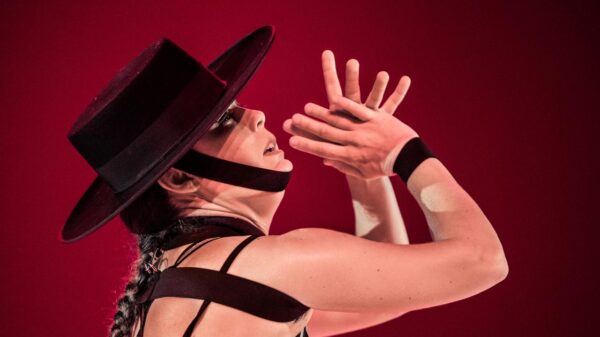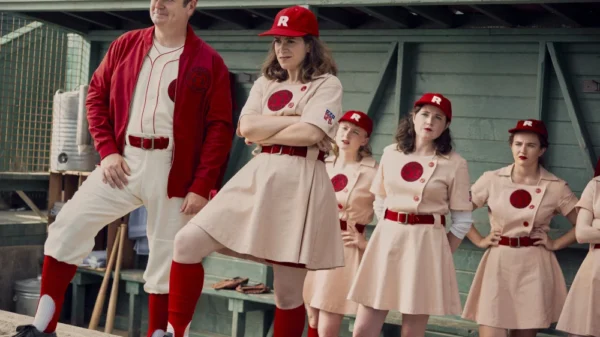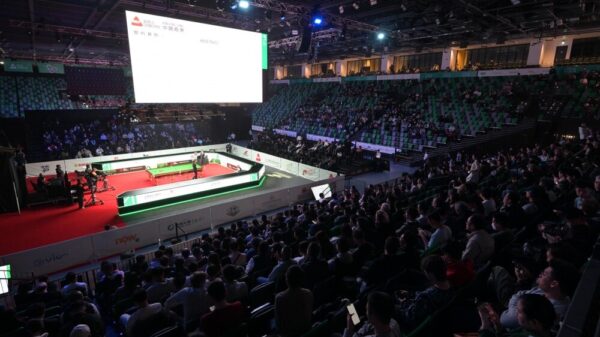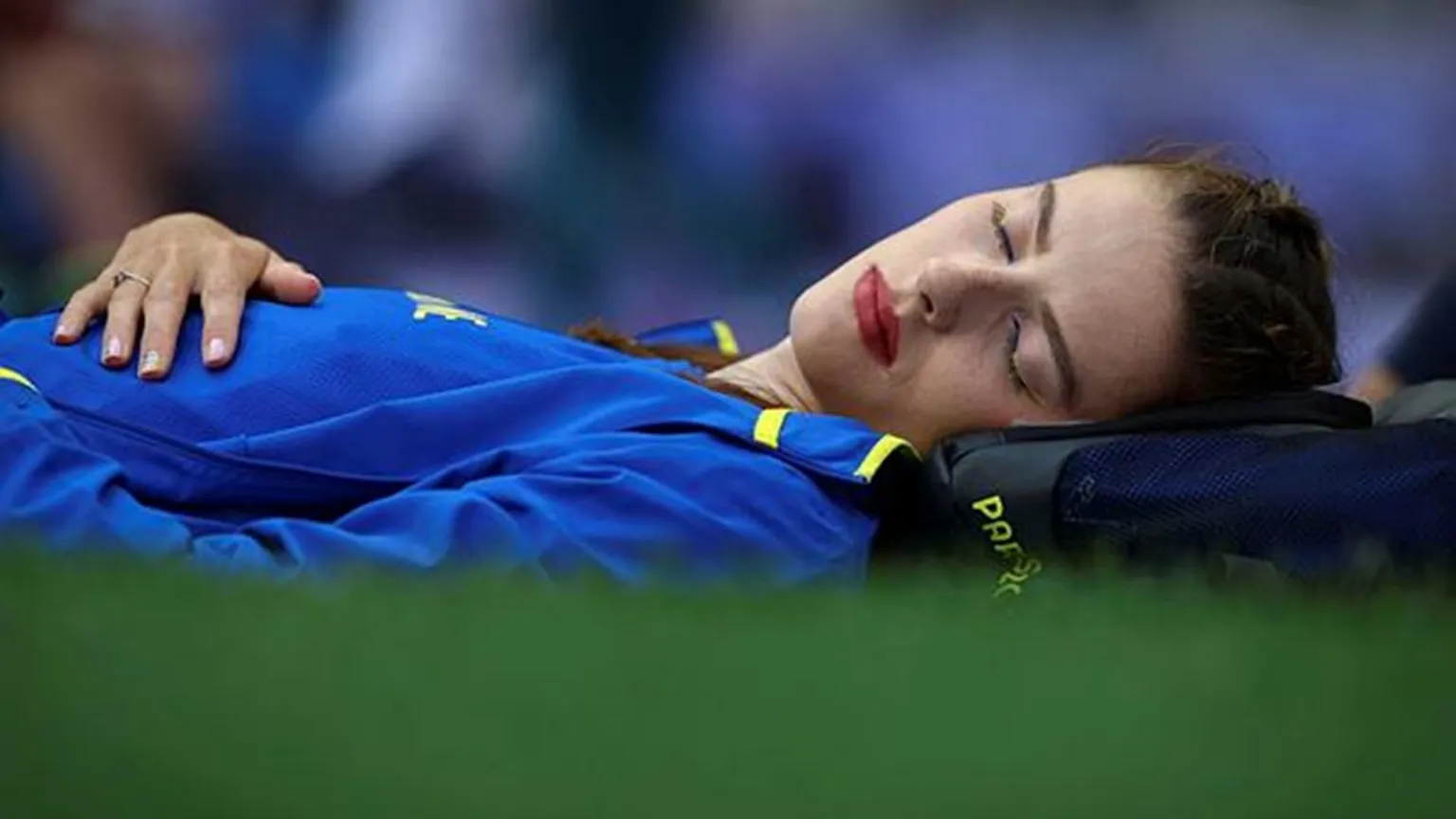Introduction to Yaroslava Mahuchikh
Yaroslava Mahuchikh, a 22-year-old Ukrainian high jumper, has firmly established herself as one of the most remarkable athletes in track and field sports today. Her career, which has seen a meteoric rise, is defined by a collection of outstanding achievements and continued success on the international stage. From a young age, Mahuchikh demonstrated exceptional talent and determination, traits that have propelled her to the pinnacle of the high jumping world.
One of Mahuchikh’s most significant milestones came at the Youth Olympic Games in 2018, where she clinched the gold medal, showcasing her exceptional abilities to a global audience. Following this feat, she solidified her status by securing the high jump title at the European U18 Championships, and her trajectory continued upward. In 2019, at just 18 years old, she claimed the silver medal at the IAAF World Championships in Doha, Qatar, further attesting to her extraordinary prowess and consistency.
Mahuchikh’s relentless pursuit of excellence has led her to break multiple records. She notably set a world indoor junior record in the high jump, clearing an astounding height of 2.02 meters. Her performances have consistently thrilled audiences and set new benchmarks in the sport. Yaroslava’s dedication and hard work culminated in her participation in the Tokyo 2020 Olympics, where she achieved the ultimate accolade by winning the gold medal in high jump, representing Ukraine at the highest level and making her nation proud.
Throughout her career, Yaroslava Mahuchikh has become synonymous with determination, resilience, and unmatched skill in high jumping. Her multiple world record feats and triumphs at major competitions illustrate her status as a prominent figure in athletics. As she continues to push the boundaries of her sport, Mahuchikh’s journey inspires both aspiring athletes and sports enthusiasts worldwide.
The Importance of Mental Relaxation for Athletes
Mental relaxation is a crucial aspect for athletes aiming to achieve peak performance, especially in high-pressure environments like the Olympics. Maintaining a relaxed and uncluttered mind allows athletes to channel their energy and focus on their physical performance effectively. Dr. Sudhir Kumar, a renowned neurologist, emphasizes that mental relaxation techniques can significantly optimize athletic performance. According to Dr. Kumar, “A calm mind is able to visualize success, improve concentration, and execute complex physical tasks with greater precision.” Thus, incorporating mental relaxation as an integral component of an athlete’s regimen is indispensable.
Athletes at elite levels often experience intense mental stress, which can manifest in anxiety, self-doubt, and cognitive overload. These factors can detract from their overall performance and increase the risk of errors or injuries. Techniques such as meditation, deep-breathing exercises, and visualization practices are instrumental in mitigating these mental stressors. For instance, visualization enables athletes to mentally rehearse their performance, which can enhance muscle memory and reduce stage fright. Meditation and deep-breathing, on the other hand, can lower cortisol levels, leading to a more composed and balanced state of mind.
Furthermore, scheduled mental relaxation can aid in faster recovery after strenuous training sessions or competitions. By allowing the brain to rest and recuperate, athletes can improve their resilience and adaptability in face of future challenges. Maintaining a regimen that balances physical training with mental relaxation not only safeguards an athlete’s well-being but also paves the way for achieving their highest potential. Thus, understanding the importance of a serene mind and actively engaging in mental relaxation practices can be the distinguishing factor between a good athlete and a great one.
Mahuchikh’s Iconic Paris Olympics Ritual
Yaroslava Mahuchikh’s performance techniques at the Paris Olympics are not only rooted in rigorous training but also in her distinctive and methodical downtime routine. This unique approach includes lying down in her sleeping bag between attempts, a practice she swears by to maintain her form and focus. This unusual method helps her recalibrate mentally and physically, proving crucial in high-stakes scenarios where the margin for error is minuscule.
The rationale behind this unorthodox ritual lies in its psychological and physiological benefits. Resting in a sleeping bag provides Mahuchikh a cocoon of comfort, allowing her to relax her muscles and ease her mind amidst the high-pressure competition environment. It’s a sanctuary of stillness that sharply contrasts with her explosive high-jump efforts, striking a balance that seems to be a winning factor in her performances.
Another critical component of Mahuchikh’s ritual includes changing her socks before each attempt. While it may seem a minor detail, this ritual holds significant practical and symbolic value. Fresh socks ensure optimal grip and comfort, preventing any mishaps that could occur from slipping or blisters, which are common concerns in such an intense sport. Symbolically, it acts as a mental reset, reaffirming her readiness for the next leap.
Together, these routines form a holistic downtime ritual that underpins Mahuchikh’s success. By meticulously integrating these practices into her competition routine, she not only enhances her physical preparedness but also fortifies her mental resilience. These practices serve as a testament to how personalized rituals can play an essential role in an athlete’s overall performance strategy. By understanding and prioritizing what works best for her, Mahuchikh optimizes her chances of success on the Olympic stage, making her downtime routine as vital as her training regimen.
Psychological Benefits of Mahuchikh’s Routine
Yaroslava Mahuchikh, the celebrated high jumper, has developed a unique downtime routine that provides significant psychological benefits, contributing to her success on the field. The ritual of lying down in a sleeping bag and changing socks, seemingly simple activities, play a critical role in maintaining her mental fortitude. Central to Mahuchikh’s routine is the concept of creating a mental break between attempts, which helps her reset and stay focused.
Lying down in a sleeping bag allows Mahuchikh to close her eyes and imagine herself in a peaceful, comforting environment. This practice promotes relaxation, reducing physiological and psychological stress, and enabling her to manage competitive pressure more effectively. The brief moments of rest contribute to a sense of calm, which is crucial in high-stakes environments where athletes must stay composed and deliver optimal performance.
Changing socks may appear trivial, but this act holds substantial psychological significance. By wearing fresh socks, Mahuchikh symbolically prepares herself for a new attempt, metaphorically shedding any previous failure or anxiety associated with her past jumps. This act of resetting provides a mental cue that distinguishes each attempt as a fresh opportunity, reducing the potential for negative thoughts or performance anxiety to accumulate.
Overall, Mahuchikh’s downtime routine offers a structured approach to coping with the high demands of competitive sports. The combined effect of these rituals promotes mental clarity and enhances her ability to rebound from setbacks. This approach underscores the importance of integrating psychological strategies into athletic training, demonstrating that mental well-being is just as pivotal as physical preparation in achieving sporting excellence.
Public Reaction and Social Media Buzz
The public reaction to Yaroslava Mahuchikh’s unique downtime routine has been overwhelmingly positive, providing an interesting glimpse into how athletes recharge outside of their competitive schedules. On social media platform X, fans and observers alike have taken to sharing their thoughts, ranging from admiration for Mahuchikh’s refreshing approach to humorously making light of their own downtime activities.
One of the most frequent comments observed is the admiration for Mahuchikh’s balanced lifestyle. Users have expressed how inspiring it is to see a top-tier athlete like her engage in activities that are both relaxing and productive. “It’s great to see her taking time for herself, mental health is just as important as physical training,” one user commented, capturing the sentiment of many.
In addition to serious observations, memes about Mahuchikh’s unique habits have garnered widespread attention. A particularly popular meme format juxtaposes Mahuchikh’s sophisticated hobbies with more common, everyday forms of relaxation, eliciting laughs and creating a sense of relatability. One viral meme humorously compared her penchant for reading classic literature to someone binge-watching a TV series, underlining the diversity in leisure activities.
Furthermore, fans have been sharing insights and personal anecdotes inspired by Mahuchikh’s routine. Several posts highlight how viewers have adopted similar habits, from picking up new books to exploring different methods of relaxation. This creates a ripple effect, underscoring Mahuchikh’s influence beyond the athletic realm and into lifestyle choices.
Overall, the social media buzz around Yaroslava Mahuchikh’s downtime routine emphasizes the growing understanding that elite athletes also need time to unwind in order to maintain peak performance. This reflects a broader cultural shift towards valuing mental well-being as much as physical prowess, a sentiment clearly echoed across platform X.
Athletes and Their Quirky Rituals
In the realm of competitive sports, the mental preparation of athletes often intertwines with unique, personal rituals. These pre-performance routines can range from the seemingly mundane to the extraordinarily quirky. Much like Yaroslava Mahuchikh’s individualized downtime routine, other well-known athletes also embrace distinctive practices that help them excel in their respective sports.
Take for instance, tennis legend Rafael Nadal, whose meticulous routine prior to every match is well-documented. He aligns his water bottles in a specific way, ensuring that the labels face outward, and performs a series of ritualistic movements that include fixing his hair and adjusting his socks with exact precision. Nadal’s adherence to this routine is a crucial element of his mental preparation, allowing him to focus and create a sense of control before stepping onto the court.
Similarly, swimmer Michael Phelps, renowned for his record-breaking achievements, credits part of his success to his pre-race ritual. Before each race, Phelps engages in deep breathing exercises while stretching his arms in a precise manner. He also dons his headphones and listens to specific tracks to get into the right mental zone. This auditory stimulation plays a key role in his ability to shut out distractions and maintain peak concentration.
Lebron James, a prominent figure in basketball, has a unique pre-game ritual as well. James indulges in a ‘toss’ ritual where he claps his hands covered in chalk powder, throwing it into the air before every game. This act serves as both a symbolic and practical maneuver, helping him grip the ball better while also signaling the beginning of his mental shift into game mode.
These examples, among numerous others across various sports disciplines, highlight that quirky rituals are a common facet of sports culture. These routines not only help athletes like Rafael Nadal, Michael Phelps, and Lebron James to prepare mentally, but they also foster a sense of familiarity and comfort. In this light, Yaroslava Mahuchikh’s unique downtime practices join a long tradition of athletes embracing personal rituals as a vital component of their extraordinary performances.
Expert Opinions on Pre-performance Rituals
Pre-performance rituals have garnered significant attention from sports psychologists and other experts in recent years. These routines, often personalized for each athlete, are believed to play a crucial role in optimizing performance and mental resilience. Dr. Laura Johnson, a leading sports psychologist, suggests that pre-performance rituals can function as a powerful psychological cue, signaling to the mind and body that it is time to transition into a competitive state. This allows athletes like Yaroslava Mahuchikh to hone their focus and manage stress effectively.
The importance of these rituals is further corroborated by Dr. Michael Evans, who emphasizes the concept of “psychological readiness.” According to Dr. Evans, consistent pre-performance routines can establish a sense of familiarity and control, combating the inherent unpredictability of competitive environments. Employing specific actions, whether it be listening to a set playlist or engaging in visualization techniques, can trigger a conditioned response, optimizing both arousal levels and cognitive function.
Moreover, the consistency of these rituals can aid in mitigating anxiety. Routine actions provide a comforting structure that can buffer against the mental pressures athletes face. Sue Carter, a performance coach specializing in high-stress sports, highlights that these rituals serve as a mental anchor, grounding the athlete and reducing the cognitive load associated with high-stakes competition. This sense of stability can be particularly beneficial in maintaining peak performance over extended periods.
Interestingly, pre-performance rituals are not exclusively beneficial for managing stress. Research also suggests that these routines can enhance overall well-being and happiness. Engaging in activities that are enjoyable or mentally stimulating can elevate mood and enhance motivation, contributing positively to an athlete’s long-term performance trajectory. Thus, the strategic integration of pre-performance rituals can indeed be a pivotal element in an athlete’s success, both on and off the field.
Yaroslava Mahuchikh is renowned for her exceptional skills on the high jump track, yet her life outside athletics paints a portrait of a multifaceted individual. Away from the spotlight of competition, Yaroslava enjoys a range of personal interests and hobbies that contribute to her balanced lifestyle. These activities not only provide crucial downtime from her rigorous training regimens but also offer insights into her vibrant personality and future aspirations.
One significant hobby that Mahuchikh engages in is painting. A creative at heart, she finds solace and expression through her artwork. Painting allows her to cultivate a sense of tranquility, reflecting her openness to exploring various aspects of life beyond her athletic pursuits. This hobby also serves as a meditative practice, essential for maintaining mental clarity amid the pressures of competitive sports.
Travel is another passion for Yaroslava. Exploring different cultures and destinations has broadened her perspective, fostering a deeper appreciation for the diverse world we live in. This enthusiasm for travel goes hand-in-hand with her curiosity and eagerness to learn, traits that undoubtedly aid her flexibility and adaptability both on and off the field.
Mahuchikh’s love for literature reveals yet another facet of her diverse interests. She frequently immerses herself in books ranging from classic literature to contemporary novels. Reading not only enhances her cognitive abilities but also serves as a mental escape, enabling her to unwind and recharge. This intellectual stimulation complements her physical exertion, contributing to a well-rounded approach to both her personal development and her sport.
Looking to the future, Yaroslava aspires to leverage her platform to inspire the younger generation. Engaging in community outreach and motivational speaking are among her long-term goals. By sharing her journey and experiences, she hopes to encourage aspiring athletes and individuals to pursue their dreams with dedication and resilience.
Thus, understanding Yaroslava Mahuchikh’s life beyond high jumping sheds light on her complex and rich persona. Her diverse hobbies and aspirations are a testament to her well-rounded nature, showcasing the balance that is key to her success both in athletics and personal growth.

































